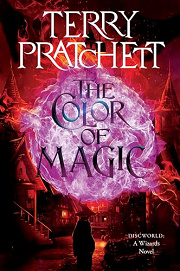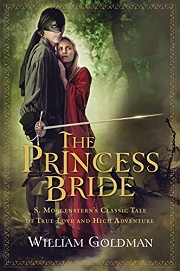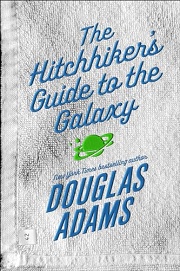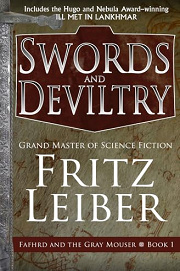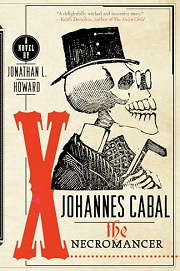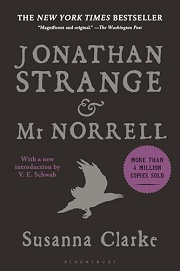Share your thoughts in a quick Shelf Talk!
The Color of Magic by Terry Pratchett
A hapless tourist and a wizard with more nerves than power set off across a flat world balancing on the backs of giants. Chaos follows in their wake—dragons, gods, and jokes sharp enough to draw blood. The Color of Magic launches Discworld with irreverent humor, gleeful adventure, and satire that still hits its mark.
Have you read this book? Share what you liked (or didn’t), and we’ll use your answers to recommend your next favorite read!
Love The Color of Magic but not sure what to read next?
These picks are popular with readers who enjoyed this book. Complete a quick Shelf Talk to get recommendations made just for you! Warning: possible spoilers for The Color of Magic below.
In The Color of Magic, did you enjoy ...
... irreverent parody of heroic fantasy tropes and fairy‑tale logic?
The Princess Bride by William Goldman
If you grinned at how The Color of Magic skewers barbarian heroes, dragon‑riders, and even the literal edge of the world, you’ll love how The Princess Bride cheerfully punctures grand quests and storybook destinies. The way Rincewind stumbles from the Wyrmberg to Krull echoes Westley’s hop from swordfight to cliffside duel to Fire Swamp—each set piece twisting a familiar trope for laughs. And like Twoflower’s cheerful tourism through danger, Goldman’s narrator winks at you the whole way, turning swashbuckling peril into a running joke without losing the fun of a daring rescue.
... deadpan, digressive humor and absurd asides that undercut cosmic stakes?
The Hitchhiker's Guide to the Galaxy by Douglas Adams
Did the dry asides and cheeky footnotes in The Color of Magic—from the perils of insurance in Ankh‑Morpork to the Luggage’s man‑eating loyalty—make you cackle? The Hitchhiker’s Guide to the Galaxy runs on that same manic, witty fuel. Arthur Dent is swept from catastrophe to catastrophe much like Rincewind fleeing the Temple of Bel‑Shamharoth, while the Guide’s entries riff on the universe the way Pratchett riffs on magic and guilds. It’s that perfect blend of chaos, cosmic scale, and the kind of throwaway joke that sticks with you.
... picaresque, episodic misadventures starring cunning survivors?
Swords And Deviltry by Fritz Leiber
If you enjoyed Rincewind and Twoflower pinballing through loosely linked escapades—from the burning of Ankh‑Morpork to dangling off the Disc’s rim—Leiber’s Swords and Deviltry delivers that same episodic thrill. Fafhrd and the Gray Mouser tumble from one caper to the next in Lankhmar’s alleys and sorcerers’ lairs, balancing danger with sardonic banter. Think of the Luggage showing up at the worst possible moment; Leiber’s stories have that same improvisational energy, where wit and nerve matter as much as steel or spells.
... a wry, morally flexible magic‑user scheming his way through peril?
Johannes Cabal the Necromancer by Jonathan L. Howard
If Rincewind’s reluctant, self‑preserving streak—bolting from dragons, bargaining with Krull’s officials, and somehow surviving—was your catnip, meet Johannes Cabal. He’s a sardonic necromancer who cuts deals with the devil and runs a demonic carnival to win back his soul. Like Rincewind, he’s no shining paragon; he’s pragmatic, slippery, and very funny when things go sideways. Where Death pops up for Rincewind with a quip, Cabal spars with devils and bureaucrats with the same deadpan bite.
... playful, worldbuilding footnotes that expand the joke and the lore?
Jonathan Strange and Mr Norrell by Susanna Clarke
If Pratchett’s footnotes—on octarine, Unseen University, or the economics of Ankh‑Morpork—were half the fun, Jonathan Strange & Mr Norrell will delight you with scholarly notes that blossom into stories of vanished roads and capricious faeries. It mirrors the way The Color of Magic lets a footnote about, say, an iconograph become a whole comic riff. Here, the annotations grow the world while keeping a dry, British wink—like Death’s cameos—lacing the grand magic with wry understatement.
Unlock your personalized book recommendations! Just take a quick Shelf Talk for The Color of Magic by Terry Pratchett. It’s only a few questions and takes less than a minute.
